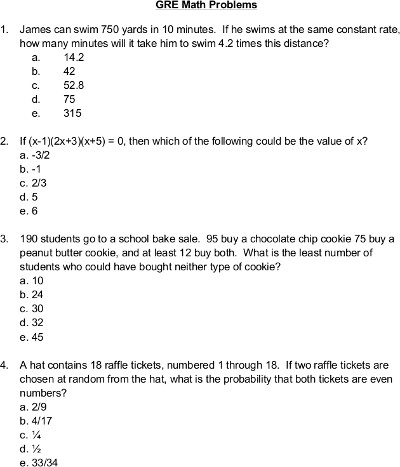Experimentation using a Confederate
Panoramica
Source: Laboratories of Gary Lewandowski, Dave Strohmetz, and Natalie Ciarocco—Monmouth University
When orchestrating an experiment, it is important that the experience elicits the most natural reactions from the participants as possible. Researchers accomplish much of this through their creation of the experimental settings.
Many research projects focus on interactions between two or more people. In these situations the environment or setting must often be less natural; often only one person can be a true participant and others in the study need to be “confederates,” that is, allegedly unbiased participants whom, in actuality, act according to the researcher’s directions.
This video uses a two-group experiment to see if participants are more likely to imitate a person with more power versus similar power compared to the participant. The video also highlights the use of research confederates.
Psychological studies often use higher sample sizes than studies in other sciences. A large number of participants helps to better ensure that the population under study is better represented, i.e. the margin of error accompanied by studying human behavior is sufficiently accounted for. Further, human participants for research like this are often readily available and the experiment is quick and inexpensive to replicate so we want to use as many participants as possible. In this video we demonstrate this experiment using just one participant. However, as represented in the results, we used a total of 156 participants to reach the experiment’s conclusions.
Procedura
1. Define key variables.
- Create an operational definition (i.e., a clear description of exactly what a researcher means by a concept) of power.
- For the purposes of this experiment, power is measured by relative authority on the college campus, e.g., a residence hall assistant has more power than a student that does not hold this position.
- Create an operational definition (i.e., a clear description of exactly what a researcher means by a con
Risultati
The procedure demonstrated in this research was repeated 155 times so that the results reflect data from 156 total participants. 78 of the participants were told that the confederate was a head residence hall assistant (first condition) while the other 78 participants were told that the confederate has no such position of power, i.e., was just a regular student like the participant (second condition).
The data graphed reflect the average number of behaviors the participant mimicked wh
Applicazione e Riepilogo
Confederates are common in psychology research. For example, a confederate can give participants specific suggestions or information that can later influence memory.2 Researchers also use confederates in field studies to recreate everyday interactions. For example, when a male confederate interacted with a baby, women liked him better than when he ignored the baby.3 This study replicates and extends previous research on embodiment, which showed that those who want to feel affiliated to another perso
Riferimenti
- Seltzer, N., & The Staff of the Princeton Review. 1,014 GRE practice questions. (L. Braswell, R. Lessem, S. Coppock, & H. Brady, Eds.). New York, NY: Random House (2009).
- Davis, S. D., & Meade, M. L. Both young and older adults discount suggestions from older adults on a social memory test. Psychonomic Bulletin & Review. 20 (4), 760-765. doi:10.3758/s13423-013-0392-5 (2013).
- Guéguen, N. Cues of men's parental investment and attractiveness for women: A field experiment. Journal of Human Behavior in the Social Environment. 24 (3), 296-300. doi:10.1080/10911359.2013.820160 (2014).
- Lakin, J. L., & Chartrand, T. L. Using nonconscious behavioral mimicry to create affiliation and rapport. Psychological Science. 14 (4), 334-339 doi:10.1111/1467-9280.14481 (2003).
- Dickens, L., & DeSteno, D. Pride attenuates nonconscious mimicry. Emotion. 14 (1), 7-11. doi:10.1037/a0035291 (2014).
Vai a...
Video da questa raccolta:

Now Playing
Experimentation using a Confederate
Experimental Psychology
17.8K Visualizzazioni

From Theory to Design: The Role of Creativity in Designing Experiments
Experimental Psychology
18.3K Visualizzazioni

Ethics in Psychology Research
Experimental Psychology
29.1K Visualizzazioni

Realism in Experimentation
Experimental Psychology
8.3K Visualizzazioni

Perspectives on Experimental Psychology
Experimental Psychology
5.6K Visualizzazioni

Pilot Testing
Experimental Psychology
10.3K Visualizzazioni

Observational Research
Experimental Psychology
13.0K Visualizzazioni

The Simple Experiment: Two-group Design
Experimental Psychology
73.3K Visualizzazioni

The Multi-group Experiment
Experimental Psychology
22.8K Visualizzazioni

Within-subjects Repeated-measures Design
Experimental Psychology
23.0K Visualizzazioni

The Factorial Experiment
Experimental Psychology
73.2K Visualizzazioni

Self-report vs. Behavioral Measures of Recycling
Experimental Psychology
11.8K Visualizzazioni

Reliability in Psychology Experiments
Experimental Psychology
8.5K Visualizzazioni

Placebos in Research
Experimental Psychology
11.6K Visualizzazioni

Manipulating an Independent Variable through Embodiment
Experimental Psychology
8.5K Visualizzazioni

